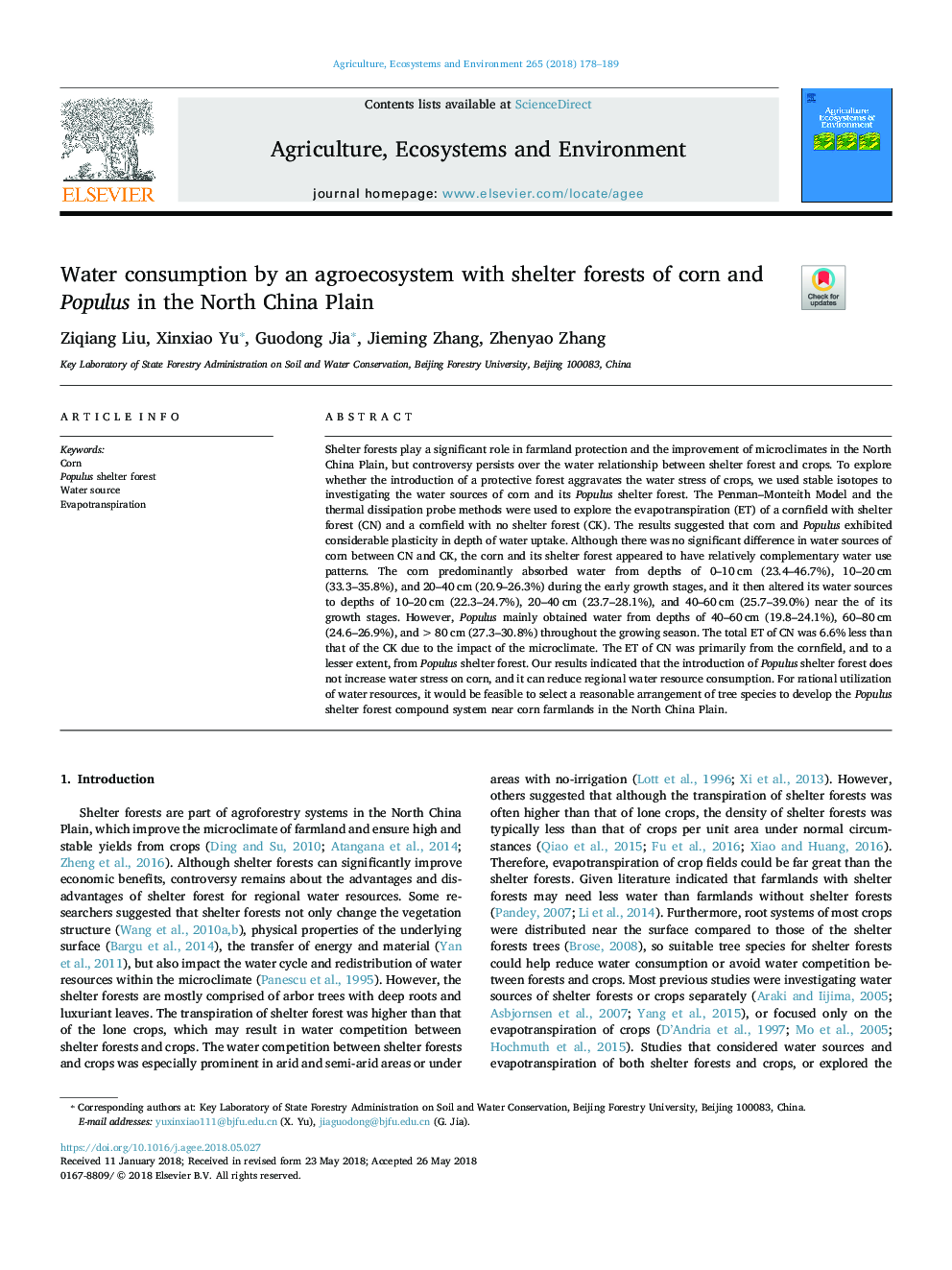| Article ID | Journal | Published Year | Pages | File Type |
|---|---|---|---|---|
| 8486973 | Agriculture, Ecosystems & Environment | 2018 | 12 Pages |
Abstract
Shelter forests play a significant role in farmland protection and the improvement of microclimates in the North China Plain, but controversy persists over the water relationship between shelter forest and crops. To explore whether the introduction of a protective forest aggravates the water stress of crops, we used stable isotopes to investigating the water sources of corn and its Populus shelter forest. The Penman-Monteith Model and the thermal dissipation probe methods were used to explore the evapotranspiration (ET) of a cornfield with shelter forest (CN) and a cornfield with no shelter forest (CK). The results suggested that corn and Populus exhibited considerable plasticity in depth of water uptake. Although there was no significant difference in water sources of corn between CN and CK, the corn and its shelter forest appeared to have relatively complementary water use patterns. The corn predominantly absorbed water from depths of 0-10â¯cm (23.4-46.7%), 10-20â¯cm (33.3-35.8%), and 20-40â¯cm (20.9-26.3%) during the early growth stages, and it then altered its water sources to depths of 10-20â¯cm (22.3-24.7%), 20-40â¯cm (23.7-28.1%), and 40-60â¯cm (25.7-39.0%) near the of its growth stages. However, Populus mainly obtained water from depths of 40-60â¯cm (19.8-24.1%), 60-80â¯cm (24.6-26.9%), and >80â¯cm (27.3-30.8%) throughout the growing season. The total ET of CN was 6.6% less than that of the CK due to the impact of the microclimate. The ET of CN was primarily from the cornfield, and to a lesser extent, from Populus shelter forest. Our results indicated that the introduction of Populus shelter forest does not increase water stress on corn, and it can reduce regional water resource consumption. For rational utilization of water resources, it would be feasible to select a reasonable arrangement of tree species to develop the Populus shelter forest compound system near corn farmlands in the North China Plain.
Keywords
Related Topics
Life Sciences
Agricultural and Biological Sciences
Agronomy and Crop Science
Authors
Ziqiang Liu, Xinxiao Yu, Guodong Jia, Jieming Zhang, Zhenyao Zhang,
